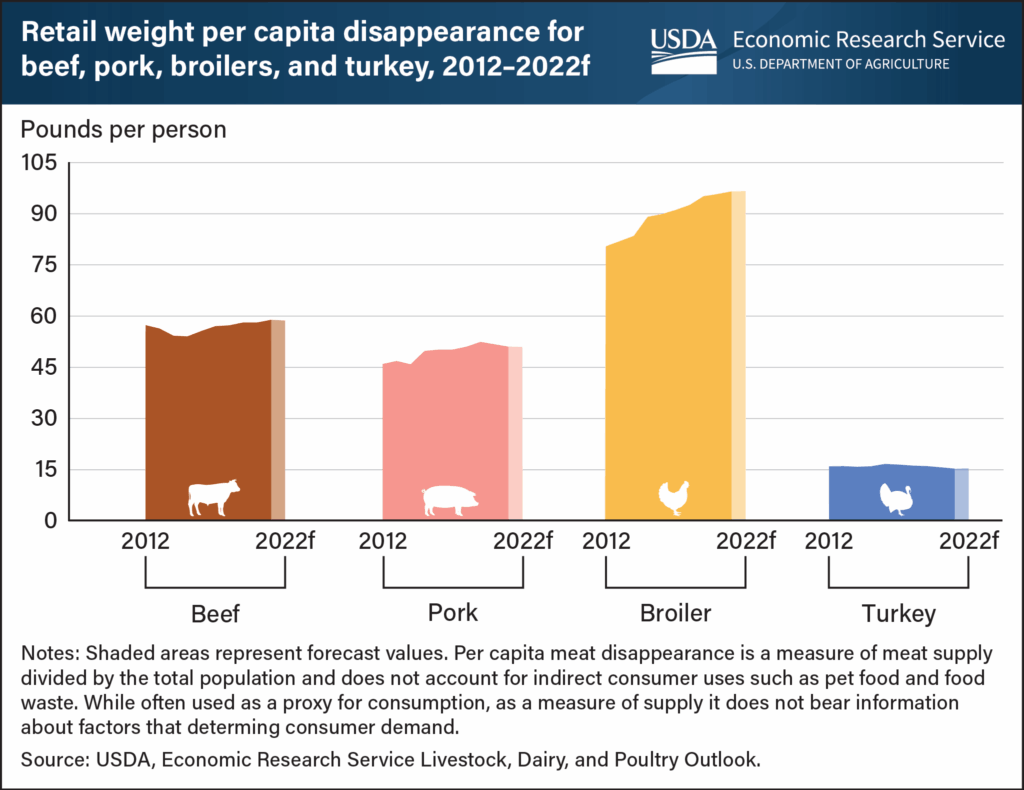The average American eats more meat than just about anyone else in the world. According to the USDA, the United States and Portugal are tied for the highest meat consumption at nearly 328 pounds per capita. The Portuguese like fish and seafood, but Americans prefer beef, pork, chicken, and turkey. Meanwhile, plant-based and lab-grown protein products lag far behind.
Will America’s meat consumption change over time? Let’s consider some history in case the past is prologue. In 1950, annual U.S. meat consumption stood at just 138 pounds per person. By 1970, that number had risen to 194. Once considered a luxury or used mainly for flavoring, meat was becoming more affordable and more abundant.
Along with risings standards of living, Americans were enjoying the benefits of advances in refrigeration, transportation, and distribution. The federal government also played a role. Subsidies for grain production, especially corn, made livestock feed cheaper. This lowered the cost of meat at a time when agricultural consolidation improved production efficiencies.
Meat Consumption Over Time
During the 1950s and 1960s, meat became a central part of the American diet and beef in particular symbolized prosperity. By the 1980s, however, concerns about cholesterol and saturated fat caused some consumers to reduce their red meat intake. Yet they didn’t become vegetarians. Instead, they increased their consumption of poultry and pork, “the other white meat”.
By the 1990s, chicken had overtaken beef as the most consumed meat in America. The poultry industry promoted chicken as a healthier option, but innovations in production also made chicken less expensive and more abundant. Processed and frozen chicken products such as nuggets and strips became staples in many American households. They were quick and easy to cook – an added advantage over beef.
In response, the beef industry launched several advertising campaigns and developed innovations such as low-fat ground beef and new chuck and round cuts. Nevertheless, beef consumption fell from about 67 pounds to under 60 pounds per person between 1990 and 2005. Meanwhile, poultry consumption rose to over 80 pounds per person.
More recently, sales of plant-based protein grew by over 40% from 2017 and 2020. Yet these sales are still small compared to total meat consumption, in part because plant-based products are still more expensive per pound. Lab-grown meat also cost more, but the price of a serving has fallen from $300,000 in 2013 to less than $20 today.
Would American reduce their meat consumption? If history is a guide, we’re willing to change our eating habits to improve our health and reduce our expenses. Yet it’s also fair to say that government subsidies and marketing campaigns also play an important role. As U.S. Health and Human Services Secretary Robert F. Kennedy Jr. seeks to “make America healthy again”, both are worth considering.

